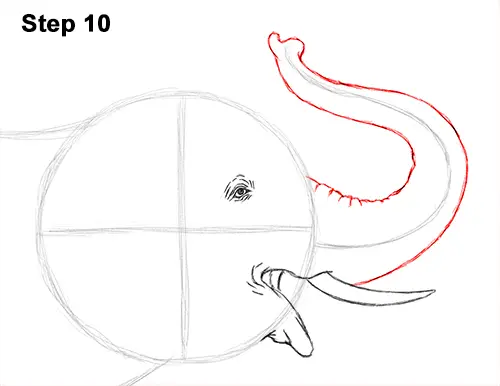
Step 10: Use the curved line on the right as a guide to draw the elephant's trunk. Follow the basic path of the guide as you sketch the shape of the trunk lightly at first. Draw a wavy line at the end of the guide for the finger- like tip of the trunk. When you get the outer shape of the trunk right, darken the line.
Now lightly sketch the inside line of the trunk as you follow the basic path of the guide. Make the base of the elephant's trunk thicker than the tip. Darken the line when you get the shape right. Add some small lines where the trunk curves for the skin's creases.
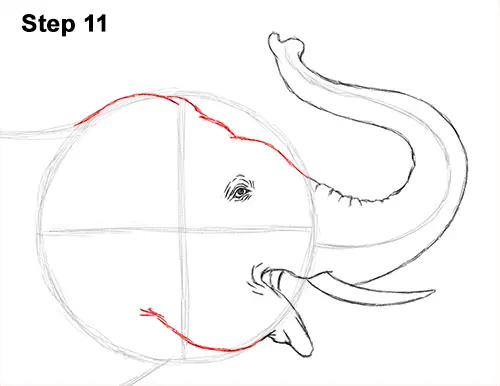
Step 11: Use the initial circle as a guide to draw the shape of the head. Follow the basic path of the circle but make the forehead come inward more. Asian elephants' heads have two domes on top, while African elephants only have one, so draw two curved lines at the top. Follow the bottom edge of the initial circle to draw the bottom part of the head. Draw the line for the jaw a little higher than the edge of the initial circle.
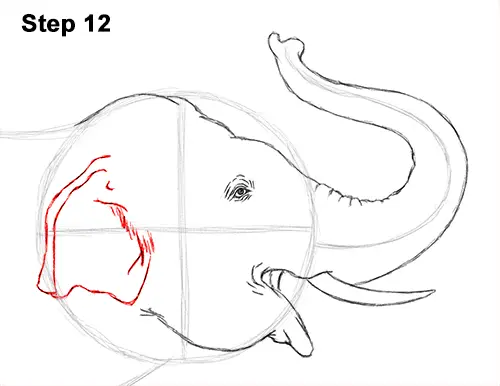
Step 12: Draw the elephant's ear inside the head. Use the construction lines as guides for the ear's placement. First draw a line from the horizontal construction line to the jawline. Then draw a wavy line for the bottom part of the ear. Now draw a longer line that follows the basic path of the circle for the outside edge of the ear. Add a few more lines within the shape of the ear for its structure and hair found there. Asian elephants' ears are smaller than those of African elephants, so don't draw this shape too big.
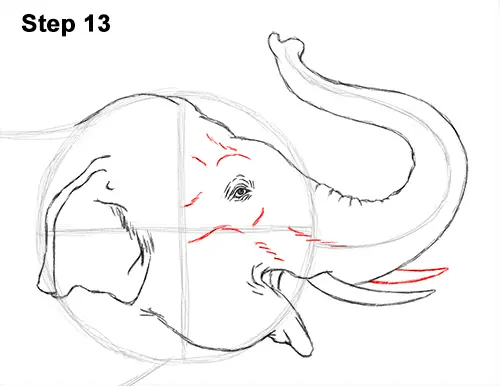
Step 13: Draw a few more lines within the shape of the head for extra detail. Draw a few curved lines and quick, short strokes around the eye to emphasize the elephant's cranial structure. Add a few lines below the eye, near the mouth, to indicate the inner path of the tusk. Draw the visible portion of the tusk that's on the other side of the trunk.
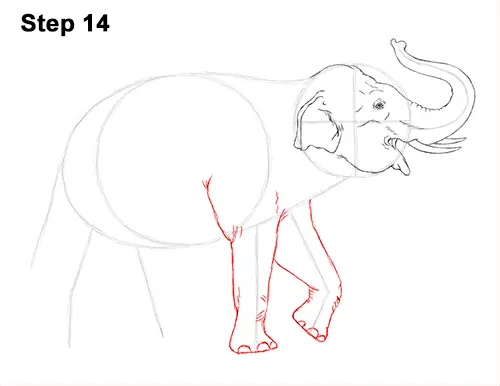
Step 14: Use the lines on the right side as guides to draw the elephant's front legs. Lightly sketch the shape of the legs as you follow the path of the guide lines. Make the shape of the legs thick and cylindrical, almost like tree trunks. The legs need to be thick in order to support all that weight. Their weight is also the reason why elephants can't jump.
The top part of the leg should be thicker than the bottom. When you get the shape of the leg right, darken the lines. The foot at the bottom should be wide and flat. The section right above the foot should be a bit thinner. Draw a few small arcs on the bottom, right side of the foot for the nails.
Now draw the elephant's front leg on the other side of the body by using the angled line on the right as a guide. Follow the basic path of the angled line as you lightly sketch the shape of the leg. When you get the shape of the leg right, darken the lines. Draw the arcs at the bottom for the nails and add a few lines where the leg bends for the skin's creases.







